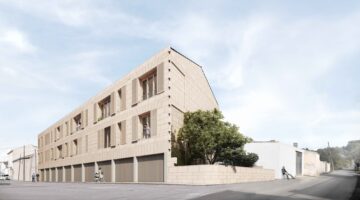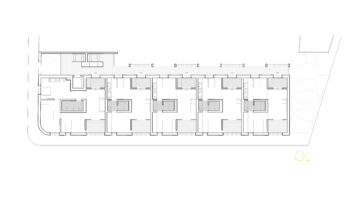



Inhabiting An Enclosed Landscape- 10 Sandstone Social Housing Units On Mallorca
Main objectives of the project
The material isolation of Mallorca (Balearic Islands, Spain) prompted its residents to cultivate a distinct material culture using the island's scarce resources. This distinctive environment fostered the development of sustainable techniques that resonate strongly with our contemporary pursuit of circularity, offering valuable insights for the future. Leveraging this legacy, IBAVI (The Balearic Social Housing Agency) has devised a scheme comprising 10 social housing units, which modernizes sandstone and timber construction methods while maintaining their inherent sustainability and tradition.
Date
- 2021: Construction
Stakeholders
- Architect: Siddartha Rodrigo
- Architect: Juan Moreno
- Architect: Javier Gavín
- Constructor: IBAVI
Location
Country/Region: Palma de Mallorca, Spain
Description
The historical inhabitants of the Balearic Archipelago possessed a unique understanding that the landscape knows no rear, unlike modern individuals who often overlook the consequences of their actions. Enclosed within their habitat, they were acutely aware of the direct impact of their choices. Despite cultural connections across the Mediterranean, this material isolation compelled them to forge their own material culture from the island's scant resources. This enclosed environment fostered the development of sustainable techniques that resonate strongly with our contemporary pursuit of circularity, offering valuable insights for the future.
Drawing upon this tradition, a novel social housing scheme emerged, revitalizing sandstone and timber construction methods while capitalizing on their inherent sustainability. Located on the outskirts of Santa Margalida, a small town in Mallorca, the scheme comprises ten dwellings and an equal number of workshops on the first floor. Designed to address both the climate and housing emergencies facing the region, the project integrates strategies for energy reduction and creation during construction and use.
The marriage of vernacular local knowledge with contemporary building practices lies at the heart of achieving high sustainability standards. Beyond providing shelter for local families and addressing the housing crisis, the project's broader objective is to catalyze the revitalization of the local building industry. By updating and standardizing traditional methods, it aims to create economic opportunities and foster social sustainability in rural areas.Traditional techniques are adapted and updated in collaboration with local artisans to minimize reliance on fossil fuel-intensive materials. A range of strategies, from passive design features to renewable energy systems, ensure optimal comfort and efficiency without compromising interior living conditions. The project's significance transcends its immediate impact, as it serves as a prototype for future developments by IBAVI. Solutions devised and tested here will be disseminated to effect change on a larger scale within the local building industry. Quantifiable objectives include significant reductions in energy consumption, water usage, and CO2 emissions compared to standard buildings.Aesthetic considerations are imbued with ethical principles, celebrating the unique qualities of the local environment and the intrinsic value of physical presence. Exposed sandstone and timber serve as reminders of the materials' origins and their connection to the surrounding landscape, enhancing the sensory experience of the space.
Inclusivity is embedded in the project's ethos, with publicly owned buildings offering affordable rents to mitigate the impact of soaring housing prices driven by uncontrolled tourism. While its impact on the broader housing market may be limited, it represents a step towards greater social equity and resilience.
Recognized as a NEB Rising Star in 2021, the project exemplifies resilience and circularity in contemporary architectural practice, setting a precedent for sustainable development in the region and beyond.

